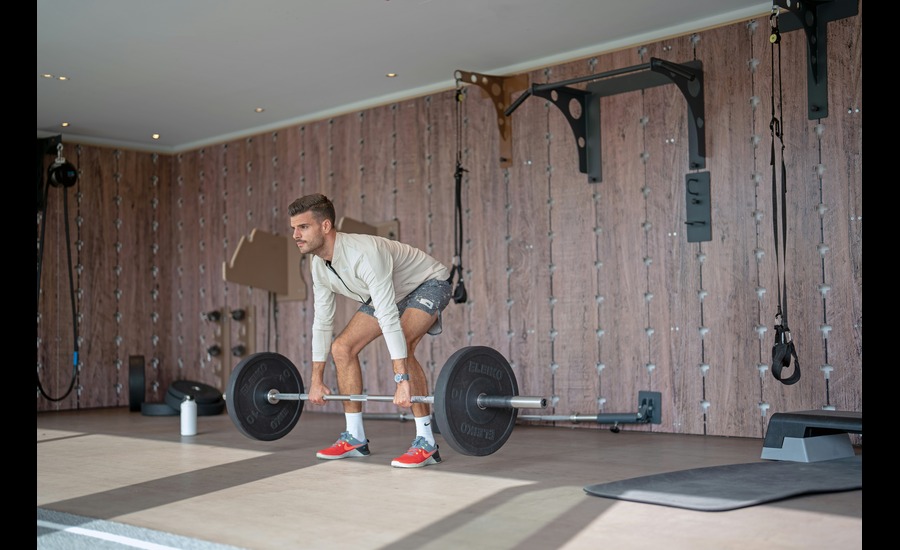Wellhealth How To Build Muscle Tag With Exercise & Diet
Introduction
Building muscle is a multifaceted process that requires a combination of proper nutrition, consistent exercise, and adequate rest. Understanding the science behind muscle growth, known as hypertrophy, is essential for anyone looking to enhance their physique, improve their strength, or maintain overall health. This comprehensive guide will delve into the principles of muscle building, providing you with the knowledge and strategies needed to achieve your fitness goals. Whether you are a beginner or an experienced athlete, the insights shared here will help you optimize your efforts and see tangible results.
The Science of Muscle Growth
Muscle growth, or hypertrophy, occurs when muscle fibers sustain damage through resistance training, and the body repairs these fibers, making them larger and stronger. This process is influenced by several factors, including mechanical tension, muscle damage, and metabolic stress. Mechanical tension is generated when muscles contract against resistance, causing stress that leads to adaptation. Muscle damage happens when the muscle fibers are stressed beyond their usual capacity, triggering a repair process. Metabolic stress occurs when the muscles are subjected to intense activity, leading to the accumulation of metabolites like lactate, which signals the body to grow muscle. Understanding these mechanisms is crucial for designing an effective muscle-building program.

Importance of Nutrition in Muscle Building
Proper nutrition is the cornerstone of muscle growth. To build muscle, the body requires an adequate supply of protein, which provides the amino acids necessary for muscle repair and growth. Consuming a balanced diet that includes lean proteins, complex carbohydrates, and healthy fats is essential. Proteins such as chicken, fish, eggs, and legumes should be incorporated into your meals to ensure a steady supply of amino acids. Carbohydrates are important for providing the energy needed during workouts and for replenishing glycogen stores post-exercise. Healthy fats, found in foods like avocados, nuts, and olive oil, support overall health and hormone production, including testosterone, which plays a significant role in muscle growth.
Additionally, staying hydrated is crucial, as water is involved in numerous metabolic processes, including protein synthesis. To further support muscle growth and recovery, consider adding an Amazon L-glutamine supplement to your routine, as it aids in protein synthesis and overall muscle health.
The Role of Resistance Training
Resistance training is the most effective way to stimulate muscle growth. This type of exercise involves lifting weights or using resistance bands to challenge your muscles. It is important to follow a structured workout program that targets all major muscle groups, including the chest, back, legs, shoulders, and arms. Exercises such as squats, deadlifts, bench presses, and rows are compound movements that engage multiple muscle groups simultaneously, making them highly effective for building muscle. It is also beneficial to incorporate isolation exercises like bicep curls and tricep extensions to target specific muscles. Progressive overload, which involves gradually increasing the weight or resistance used in your workouts, is key to continued muscle growth. This principle ensures that your muscles are consistently challenged, prompting them to adapt and grow stronger.
The Significance of Rest and Recovery
Rest and recovery are often overlooked but are critical components of a muscle-building program. When you exercise, especially during resistance training, you create small tears in your muscle fibers. It is during the recovery phase that these fibers are repaired and grow stronger. Adequate sleep, typically 7-9 hours per night, is essential for muscle recovery and overall health. During deep sleep, the body releases growth hormone, which plays a vital role in muscle repair and growth. Additionally, taking rest days between intense workouts allows your muscles to recover and reduces the risk of overtraining, which can lead to injuries and hinder progress. Incorporating techniques such as stretching, foam rolling, and massage can also aid in recovery by improving blood flow and reducing muscle soreness.

Importance of Consistency and Patience
Building muscle is a gradual process that requires consistency and patience. It is important to stick to your workout and nutrition plan, even when progress seems slow. Tracking your workouts and monitoring your progress can help you stay motivated and make necessary adjustments to your program. Setting realistic goals and celebrating small milestones along the way can also keep you motivated. Remember that muscle growth does not happen overnight, and it is the cumulative effect of consistent effort that leads to significant results over time. Embracing the journey and maintaining a positive mindset are key to long-term success in muscle building.
The Impact of Genetics on Muscle Growth
Genetics play a significant role in muscle growth and individual response to training. Some people may naturally have a higher percentage of fast-twitch muscle fibers, which are more responsive to hypertrophy, while others may have more slow-twitch fibers, which are better suited for endurance activities. Genetic factors can also influence hormone levels, body composition, and the ability to recover from workouts. While you cannot change your genetics, understanding your genetic predisposition can help you tailor your training and nutrition plan to optimize your results. For example, if you have a naturally slower metabolism, you may need to pay extra attention to your caloric intake to ensure you are consuming enough to support muscle growth.
The Role of Supplements in Muscle Building
While a well-balanced diet should provide most of the nutrients needed for muscle growth, supplements can be beneficial in certain situations. Protein supplements, such as whey or casein, can help you meet your daily protein requirements, especially if you have a busy lifestyle or struggle to consume enough protein through whole foods. Creatine is another popular supplement that has been shown to enhance strength and muscle mass by increasing the availability of ATP, the primary energy source for muscle contractions. Branched-chain amino acids (BCAAs) can aid in muscle recovery and reduce muscle soreness after intense workouts. However, it is important to remember that supplements should not replace a nutritious diet but rather complement it. Consulting with a healthcare professional or a nutritionist can help you determine which supplements, if any, are appropriate for your individual needs.
Designing an Effective Workout Program
Designing an effective workout program involves several key components: exercise selection, volume, intensity, and frequency. It is important to choose exercises that target all major muscle groups and to vary your workouts to prevent plateaus and keep your muscles challenged. Volume refers to the total number of sets and repetitions performed in a workout, while intensity refers to the amount of weight lifted or resistance used. Both volume and intensity should be adjusted periodically to continue making progress. Frequency refers to how often you train each muscle group. While some people may benefit from training each muscle group once a week, others may see better results with more frequent sessions. It is important to listen to your body and adjust your program based on your individual response to training.
Importance of Warm-Up and Cool-Down
Warming up before a workout and cooling down afterward are essential for injury prevention and optimal performance. A proper warm-up increases blood flow to the muscles, raises body temperature, and prepares the nervous system for the upcoming activity. Dynamic stretches and light cardio exercises, such as jogging or jumping jacks, are effective warm-up activities. Cooling down helps to gradually lower your heart rate and prevent blood pooling in the muscles. It also aids in the removal of metabolic waste products, such as lactic acid, which can contribute to muscle soreness. Static stretching and gentle movements are suitable for a cool-down routine. Taking the time to warm up and cool down can enhance your workout performance and reduce the risk of injury.

The Role of Cardiovascular Exercise in Muscle Building
Cardiovascular exercise, or cardio, is often associated with improving heart health and burning fat, but it also plays a role in muscle building. Incorporating cardio into your fitness routine can enhance your endurance and overall fitness, allowing you to perform better during resistance training sessions. Activities such as running, cycling, or swimming can improve your cardiovascular health and increase your energy levels. However, it is important to balance cardio with resistance training, as excessive cardio can interfere with muscle growth by increasing the risk of muscle catabolism. Finding the right balance between cardio and strength training is key to achieving your muscle-building goals without compromising your overall fitness.
Addressing Common Muscle-Building Myths
There are many myths and misconceptions surrounding muscle building that can lead to confusion and hinder progress. One common myth is that lifting heavy weights will make women bulky. In reality, women do not have the same levels of testosterone as men, making it difficult for them to gain significant muscle mass. Lifting weights can help women achieve a toned and lean physique. Another myth is that you need to spend hours in the gym every day to see results. Effective workouts often take less than an hour when structured and focused properly. Additionally, the idea that you must consume large amounts of protein immediately after a workout is overstated. While post-workout nutrition is important, the overall daily protein intake is more crucial for muscle growth.
The Psychological Aspect of Muscle Building
Many people often underestimate the psychological aspect of muscle building, but it plays a significant role in achieving your goals. Maintaining a positive mindset, staying motivated, and managing stress are crucial for long-term success. Setting realistic and achievable goals can help you stay focused and motivated. It is also important to find joy in the process and not solely focus on the end result. Engaging in activities that you enjoy, whether it is lifting weights, participating in group fitness classes, or playing sports, can make your fitness journey more enjoyable. Additionally, managing stress through practices such as meditation, yoga, or deep breathing can help you stay focused and prevent burnout.
Overcoming Plateaus in Muscle Building
Hitting a plateau, where progress seems to stall, is a common challenge in muscle building. Overcoming plateaus requires a strategic approach to training and nutrition. One effective strategy is to change your workout routine by incorporating new exercises, increasing the intensity, or adjusting the volume. This can shock your muscles and stimulate new growth. Another approach is to ensure you are consuming enough calories and protein to support muscle growth. Sometimes, increasing your caloric intake by a small amount can make a significant difference. It is also important to review your rest and recovery practices, as inadequate rest can hinder progress. Lastly, tracking your progress and making small, incremental changes can help you break through plateaus and continue making gains. Tracking variables such as the amount of weight lifted, number of repetitions, and overall workout performance provides valuable insights into necessary changes.
Balancing Muscle Building with Overall Health
While building muscle is a worthy goal, it is important to balance it with overall health and well-being. Overemphasis on muscle gain at the expense of other aspects of health, such as cardiovascular fitness, flexibility, and mental health, can lead to imbalances and potentially negative outcomes. Incorporating a variety of physical activities, including cardio, stretching, and relaxation exercises, can ensure a well-rounded fitness routine. Nutrition should not only focus on macronutrients for muscle growth but also on micronutrients necessary for overall health. Vitamins and minerals from fruits, vegetables, and whole grains play vital roles in energy production, immune function, and recovery. Additionally, maintaining a balanced approach to fitness that includes social interactions, hobbies, and relaxation can contribute to a sustainable and enjoyable lifestyle.
The Benefits of Professional Guidance
Seeking professional guidance from fitness trainers, nutritionists, or medical professionals can be highly beneficial in your muscle-building journey. Fitness trainers can provide personalized workout programs tailored to your goals, fitness level, and any physical limitations. They can also teach proper form and technique, reducing the risk of injury. Nutritionists can help you create a meal plan that meets your nutritional needs and supports muscle growth. Medical professionals can offer insights into any underlying health conditions that might affect your ability to build muscle and provide advice on managing these conditions. Professional guidance can also offer accountability and support, helping you stay on track and make informed decisions.
Adapting to Changes and Challenges
The journey to building muscle is not without its challenges. Life events, injuries, or changes in motivation can impact your progress. Learning to adapt and maintain flexibility in your approach is essential. If you experience an injury, working with a physical therapist to modify your workouts and focus on rehabilitation can help you stay active while recovering. During periods of low motivation, setting smaller, achievable goals and finding new ways to enjoy your workouts can reignite your enthusiasm. Additionally, staying informed about the latest research and trends in fitness can help you adapt your strategies to continue making progress. Embracing change and challenges as opportunities for growth can lead to long-term success and satisfaction in your muscle-building journey.
Conclusion:
Building muscle is a complex process that requires a holistic approach, combining proper nutrition, effective resistance training, adequate rest, and mental resilience. By understanding the science behind muscle growth and implementing a well-rounded fitness and nutrition plan, you can achieve your muscle-building goals. Consistency, patience, and adaptability are key factors in this journey. Balancing muscle-building efforts with overall health and seeking professional guidance can further enhance your progress and ensure a sustainable, enjoyable approach to fitness. Remember, the journey to building muscle is not just about physical transformation but also about cultivating discipline, resilience, and a positive mindset. Embrace the process, stay committed, and celebrate your achievements along the way.
FAQs:
What is the most effective way to build muscle?
The most effective way to build muscle is through a combination of resistance training, proper nutrition, and adequate rest. Resistance training involves lifting weights or using resistance bands to create mechanical tension and muscle damage, which stimulates muscle growth. Proper nutrition ensures that your body has the necessary nutrients, especially protein, to repair and build muscle fibers. Adequate rest allows your muscles to recover and grow stronger. Consistency in these three areas is key to seeing significant muscle gains.
How much protein do I need to build muscle?
The amount of protein needed to build muscle varies depending on individual factors such as body weight, age, and activity level. A general guideline is to consume 1.6 to 2.2 grams of protein per kilogram of body weight per day. For example, if you weigh 70 kilograms (about 154 pounds), you should aim for 112 to 154 grams of protein daily. High-quality protein sources include lean meats, fish, eggs, dairy products, legumes, and protein supplements if needed.
Can I build muscle without lifting weights?
Yes, you can build muscle without lifting weights by using bodyweight exercises or resistance bands. Exercises such as push-ups, pull-ups, squats, lunges, and planks can effectively build muscle if performed with proper form and sufficient intensity. Increasing the difficulty of these exercises over time, such as by adding more repetitions or using resistance bands, can continue to challenge your muscles and promote growth.






